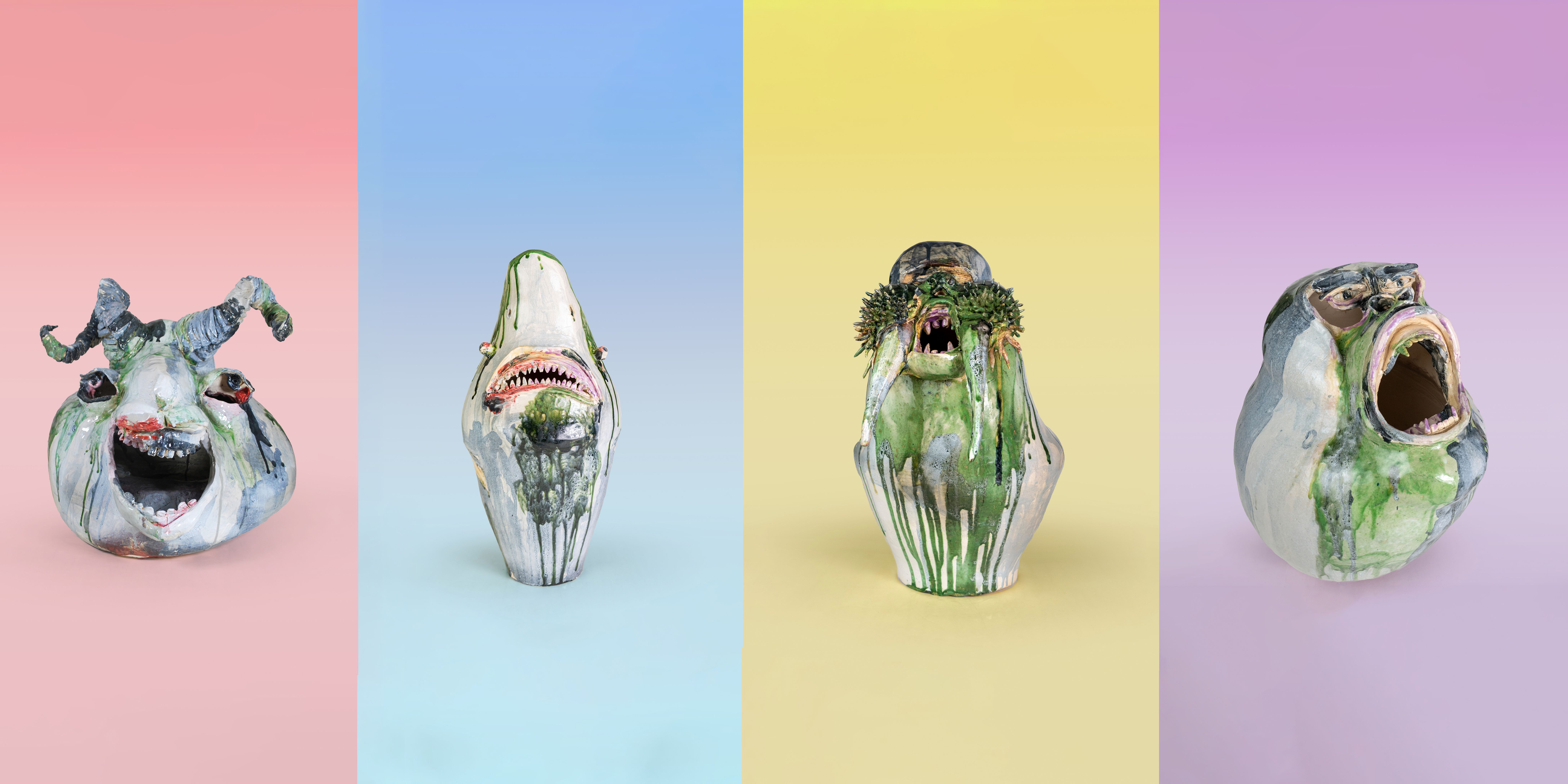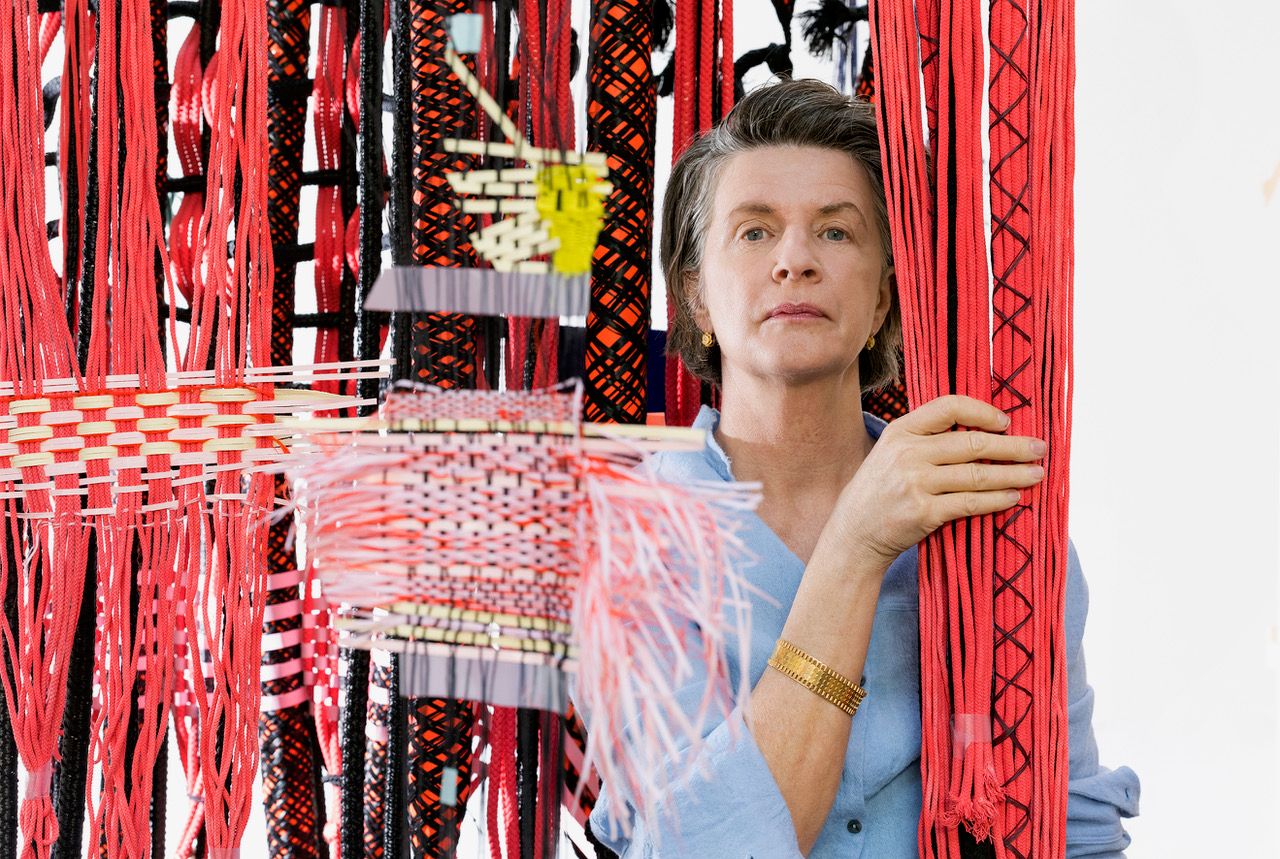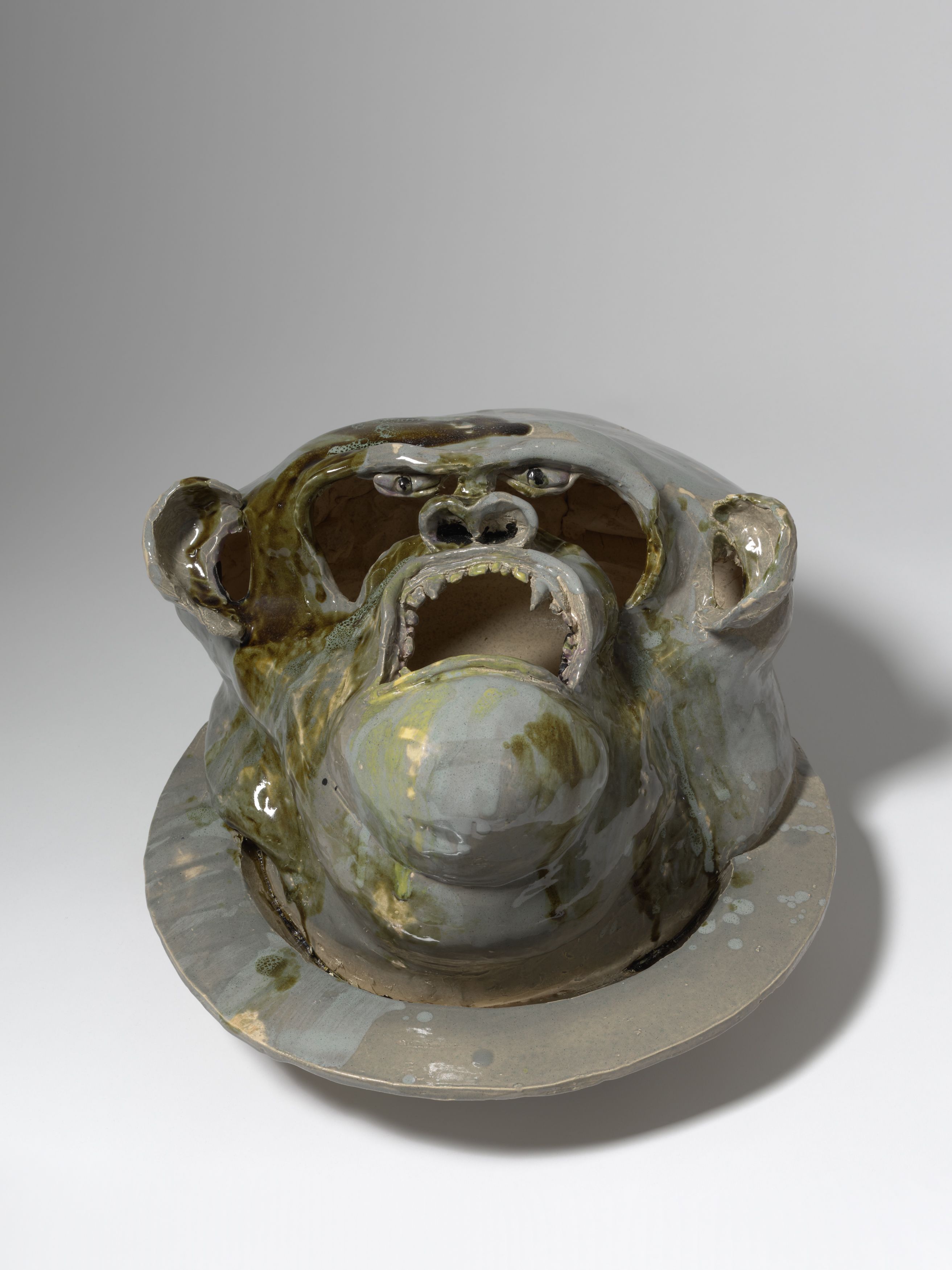
Hella JongeriusRoped Beings
A deeper awareness of the equality and interwovenness of all that exists—plants, animals, people, objects—is needed and can be healing.
Installation Views
Since the beginning of my career, I strive to improve the relationship between user and designed object—for example, by questioning and reversing the usual hierarchy between an object’s function and its narrative power. A deeper awareness of the equality and interwovenness of all that exists—plants, animals, people, objects—is needed and can be healing. Therefore, animals, as well as more abstract references to life and nature, frequently appear as narrators in my work.
—Hella Jongerius, October 2024

Salon 94 Design announces our first collaboration with renowned Dutch designer Hella Jongerius, her first solo exhibition in New York since unveiling her UN North Delegate Lounge in 2013. The exhibition, Roped Beings, features three distinct bodies of work: the Bead Tables series, Angry Animals ceramics, and experimental textile studies, all of which question conventional relationships between function, craft, and narrative. The output of Jongerius’s studio lab—a site of constant production, experimentation, and industrial design—shares center stage with her more intimate sculptural practice. As a gallery platform where art and design commingle, S94 Design is especially filled with wonder and gratitude for this collaboration.
The newly developed Bead Tables series makes its worldwide debut, evolving and expanding from Jongerius’s earlier work exploring the tension between functionality and sculptural intervention. For example, her Frog Table features a single oversized amphibian claiming its place in conversation with the user; Jongerius’s new Bead Tables advance this concept further. Porcelain beads and rope appear to erupt through the table’s rational grid pattern, creating areas of intentional dysfunction: “The beads and threads act like natural weeds and cause tension.” This deliberate compromise of utility exemplifies Jongerius’s signature approach of integrating artistic expression and industrial design frameworks. The tables, available in three formats—Dining, Desk, and Console—feature variously colored porcelain beads strung to rope that simultaneously disrupt and enhance their form.

The exhibition also includes a grand wall of her extensive Textile Studies—seemingly stopping and starting from where the finished tables grew. Here, Jongerius introduces a revolutionary “third thread” weaving structure in which the thread alternates “as warp and weft, disrupting the age-old tradition.” These experiments punctuate and recycle her significant installations at the Gropius Bau (2021) and Technical University Netherlands (2023), further developing her investigation into three-dimensional weaving techniques. The studies also exemplify her Berlin Jongerius Lab studio practice, where she and a team of designers experiment with material and technique—weaving, knotting, and braiding a macramé of distinct materials, from modest rope and tissue paper to silk and hand-dyed wools, some threaded with ceramic beads. Even an unassuming chair in the corner might sprout a weaving.

Jongerius explores the unbalanced and increasingly precarious relationship of humans with both animals and nature. The charming animal menagerie of her coveted Nymphenburg series has given way to life-size sculptural animal heads, giving voice to wild animals, our “silent partners” with whom we coexist. Rightly, they are furious! Jongerius presents her simply and aptly titled Angry Animals 2: eight hand-built ceramic sculptures, all female and newly formed friends; a shark named Erica, a hippo named Bonnie, Monica the gorilla, and so on. Beautiful and fierce, each portrait gives voice to what Jongerius describes as “the hitherto voiceless,” continuing her career-long exploration of object narratives that extend beyond pure functionality. The Angry Animals are glazed in green, brown, and orange pigments inspired by lichen that Jongerius photographed on her travels.
Contemplative yet loud, each toothy, tongued animal is a vessel for Jongerius’s trademark humor—a heightened blend of practicality, honesty, and mischievous folklore. Each character is a player in a larger tragic comedy. Jongerius sculpted the animals alone in her remote Netherlands studio and later fired them in a friend’s kiln in Arnhem. This solitary sculptural practice seamlessly joins the Jongerius lab work; the new tables become temporary pedestals for their ceramic friends.
The Bead Table series are a co-edition with galerie kreo, Paris.
Press
Wallpaper
Curbed
Architectural Digest